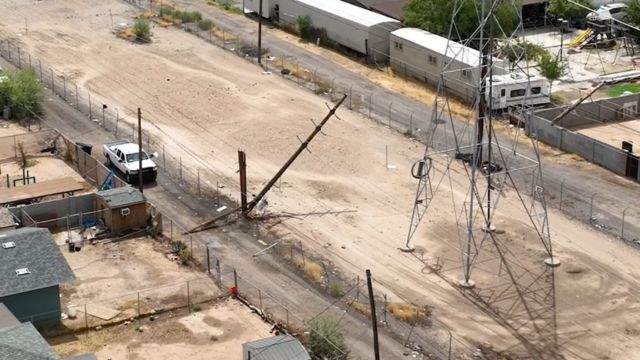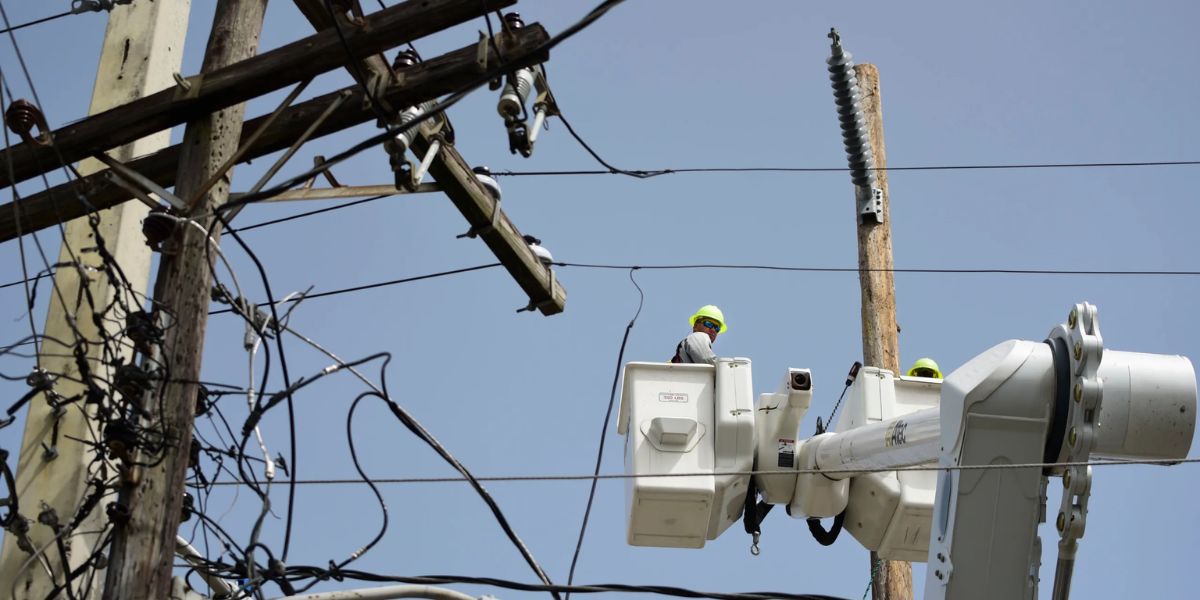Central Arizonans are worried about power outages, and they want the federal government to investigate the cause of the problem and implement a remedy.
A utility provider overseen by the Bureau of Indian Affairs, the San Carlos Irrigation Project (SCIP) provides water and power to thousands of people in and around the San Carlos and Gila River Indian Reservations, as well as houses outside of those reservations.
All the way from Pima County and the cities of Coolidge and Casa Grande in central Arizona are part of this.
Gary Terni and others in his 55+ community outside of Florence are affected by the power disruptions because of health issues.
He stated, “I got more wrong with me than I have right.” He added that he also suffers from asthma and high blood pressure. Many of the residents are in their 70s, 80s, and even 90s. They shouldn’t have to cope with this now that they’re older.
According to Terni, his waste disposal was rendered useless following a recent power outage.
“It was probably twelve hours ago when we had our last major outage.”
Dozens of people have emailed ABC15 expressing their dissatisfaction with the frequent power outages this summer, which can range from brief flickering to more than 20 hours without electricity.
ABC15 will not rest until we get the answers you need and ensure that those responsible are held to account.
Speaking with ABC15, a representative from the Bureau of Indian Affairs—which operates SCIP—told the news outlet that a car accident in Casa Grande was the reason of their most recent outage on August 13.
The bureau issued a statement stating that it affected the Coolidge-Casa Grande service region.
Not only was Anna Santilli one of the affected consumers recently, but she has also documented nine outages in the span of a few months.
She explained that the noise might be heard at any time of day or night and was completely unexpected.
The bureau has informed SCIP that they do not have sufficient water to continue generating hydropower, so the facility does not produce its own electricity. They bypass the utility companies altogether by purchasing electricity from the Southwest Public Power Agency and the Western Area Power Administration, which they then resell to over 13,000 consumers.
SCIP has been unable to produce its own electricity for many years, as the hydropower facilities were destroyed in a major flood that occurred at Coolidge Dam in 1983.
“Occasional, informal studies to evaluate the re-construction of hydropower generation at Coolidge Dam show an insufficient cost/benefit ratio,” an email from a spokesperson stated. “Furthermore, the run-off in the upper Gila River Basin is not reliable to recoup the costs to re-build hydrogenation at the Dam.”
The federal utility provider acknowledges the need to enhance the power lines’ resilience, redundancy, and repairability, although SCIP has not yet linked previous power outages.
“In contrast to other utilities, the San Carlos Irrigation Project Power Division does not possess the legal capacity to take out loans in order to fund long-term maintenance or investment projects,” the statement stated. “Congress does not appropriate funds for operation and maintenance; customer collections are the primary source for the Project’s Power Division.”

The power transmission and distribution systems were damaged by storms, and the Bureau of Indian Affairs says it is making the most of available funds to fix them.
Substation and electrical transmission infrastructure renovations, repairs, and replacements totaling $3 million have been granted, they add.
Both the outages and the rate hikes are affecting families.
The July bill for Virginia Parmer is $200 higher than her prior bill.
SEE MORE –
Upcoming Traffic Woes: Three Major Seattle Highways Closing on Thursday
To meet power supply costs that are not covered by the standard rate, SCIP has had to implement adjustments to the power purchase cost, which are then passed on to customers.
“The purchase power cost adjustor’s financial basis is evaluated quarterly by SCIP to determine if it can be reduced or eliminated,” stated a representative from BIA.
Many consumers are unhappy about the price hike.
According to Terni, “they even have the nerve to add a fee because they have to buy electricity outside because they can’t provide it, and it’s like giving them a tip to have crappy service.”
Federal law prevents state utility regulators from getting involved, despite their knowledge of the problems.
In a letter submitted to Arizona Governor Katie Hobbs last fall, four out of five commissioners on the Arizona Corporation Commission requested her help in attempting to seek federal intervention.
“It has now become painfully obvious that SCIP has long overextended its original 1928 mission of providing irrigation water and minimal power to tribal lands and surrounding communities,” the letter slams SCIP.
“The SCIP electrical system requires costly upgrades,” the letter states. “Maybe we should start talking again about selling off the federally owned utility to private companies in Arizona so that their customers are responsible for generation, transmission, and regulation.”
The concerns of SCIP have been monitored by Congressman Eli Crane.
In a statement, he stated that the Biden administration should explain its severely defective energy policies to the taxpayers, particularly those whose electricity costs have doubled.
